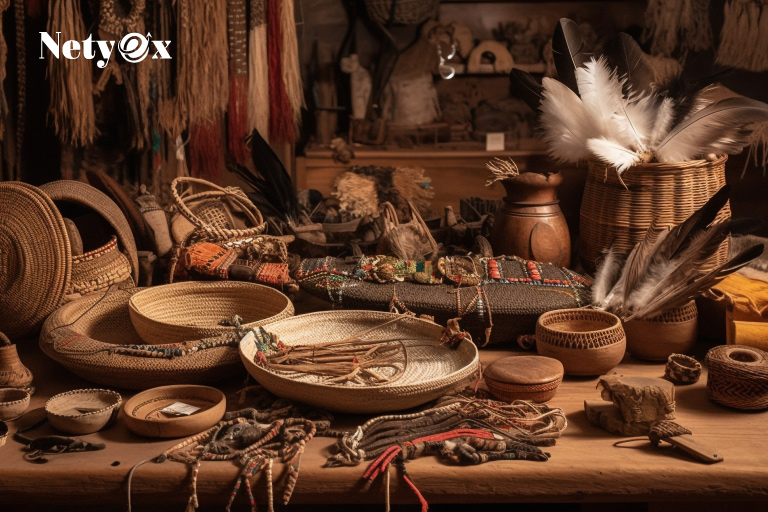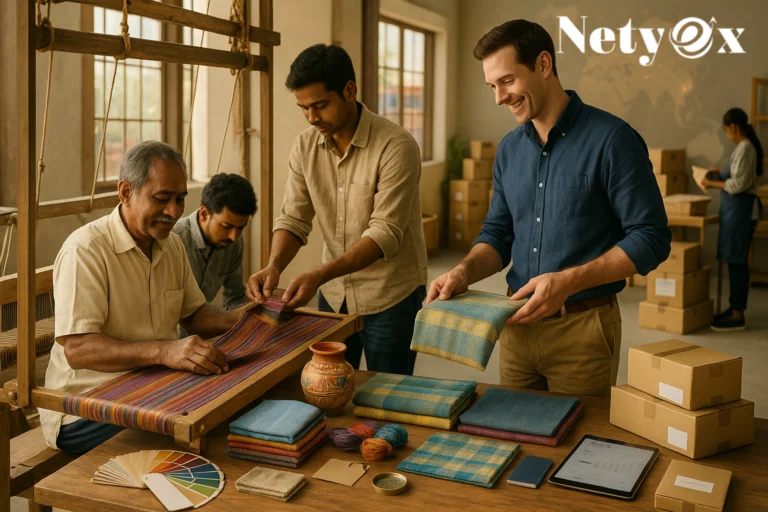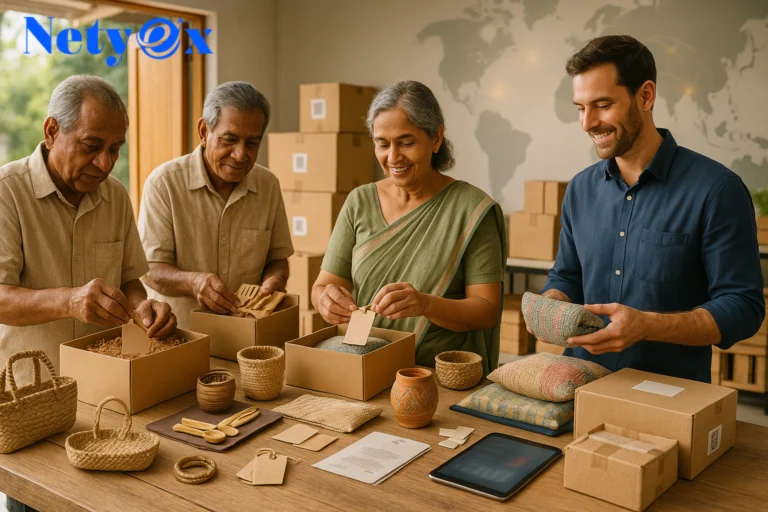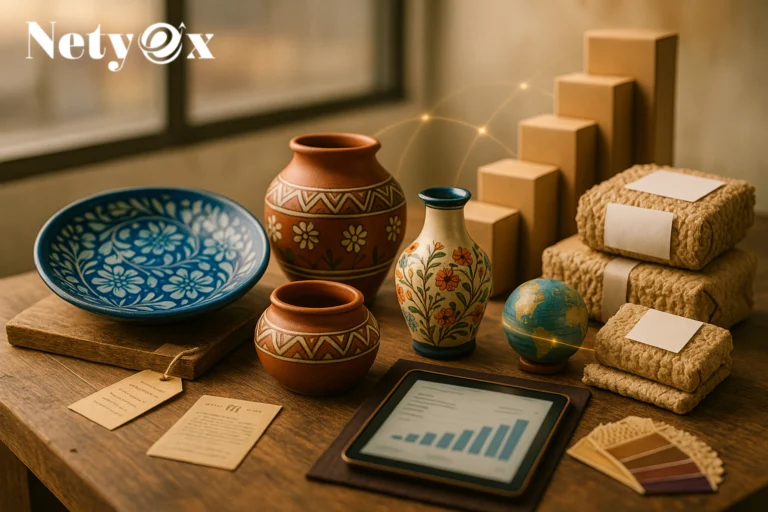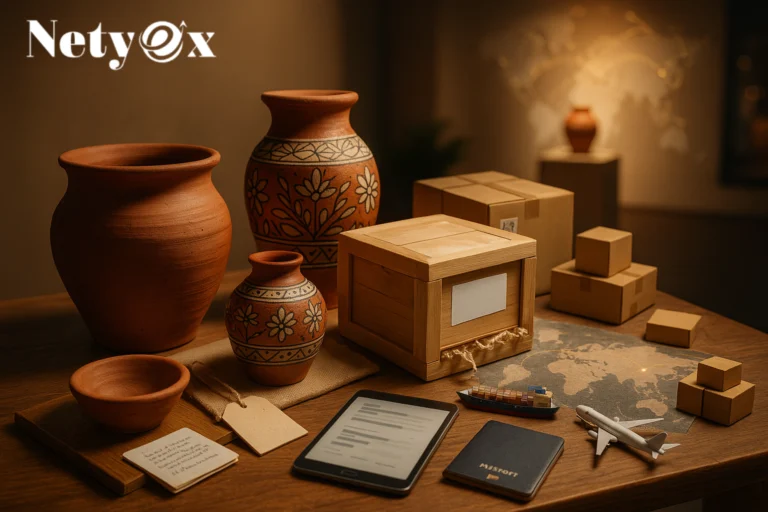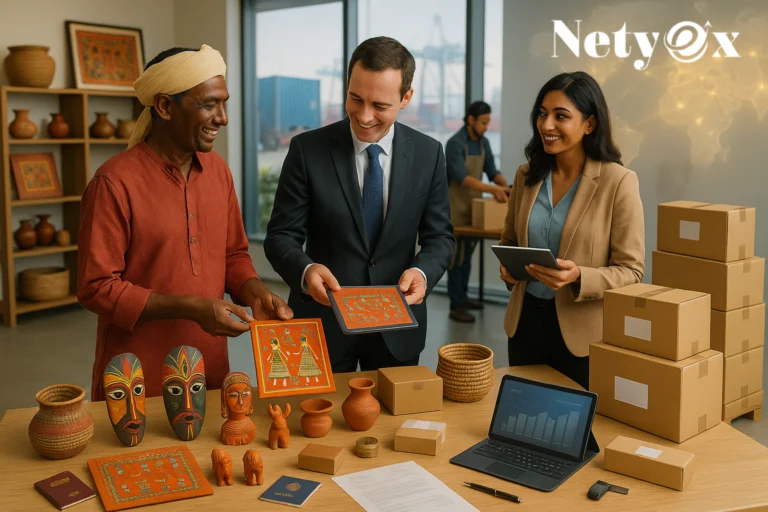Introduction to Indian Wooden Handicrafts
India has long been known as the land of art and tradition, and one of its most celebrated cultural treasures is wooden handicrafts. With centuries of heritage, skilled artisans have transformed wood into intricate carvings, furniture, toys, jewelry, and home décor that carry not only aesthetic value but also cultural narratives.
The term Indian Wooden Handicrafts does not merely signify decorative items—it reflects India’s rich traditions, cultural expressions, and craftsmanship that has sustained generations. Today, these handicrafts hold a unique place in the global market, where the demand for eco-friendly, handmade, and authentic products continues to rise.
Historical Significance of Indian Handicrafts
Woodworking in India traces its roots back to the Indus Valley Civilization, where artisans crafted functional and ornamental wooden products. Over centuries, kings and dynasties encouraged artisans, resulting in regional variations and distinct artistic styles.
Wood was often used in palace doors, temple carvings, furniture, and ritual objects. Even today, antique wooden works from Rajasthan, Kerala, and Karnataka stand as testaments to India’s timeless craftsmanship.
Role of Wood in Indian Traditional Art
Wood was considered not just a raw material but a medium of expression. It held symbolic meanings in spirituality, rituals, and everyday life. Sandalwood, rosewood, and teak were especially prized for their durability, fragrance, and fine grain, making them ideal for carving delicate motifs.
The use of natural dyes and hand-painting techniques further enriched wooden crafts, blending artistry with sustainability.
Types of Indian Wooden Handicrafts
Indian artisans create a vast variety of wooden handicrafts, reflecting diverse regional cultures and lifestyles.
Carved Furniture and Decorative Pieces
From intricately carved chairs, tables, and chests to ornamental wall hangings, Indian wooden furniture is admired for its luxury appeal. The Mughal influence introduced detailed floral carvings and geometric designs still seen in modern exports.
Wooden Toys and Figurines
Toys from Channapatna (Karnataka), crafted using lacquering techniques, are globally recognized. Similarly, wooden idols of gods and figurines from Orissa and West Bengal enjoy cultural demand.
Wooden Jewelry and Accessories
Handmade wooden bangles, earrings, and pendants have found markets among eco-conscious buyers seeking sustainable fashion.
Utility Items: Boxes, Trays, and Kitchenware
Wooden boxes, trays, bowls, and spoons combine functionality with artistry. They are popular exports due to their eco-friendly appeal.
Regional Diversity in Wooden Handicrafts
India’s regional diversity in handicrafts ensures that each state offers something unique:
- Saharanpur (Uttar Pradesh): Famous for intricate wood carving and lattice work.
- Rajasthan: Known for painted wooden furniture, puppets, and décor.
- Southern India: Renowned for rosewood, sandalwood carvings, and temple doors.
- Eastern India: Tribal wooden crafts of Jharkhand and Odisha showcase rustic beauty.
Economic Importance of Wooden Handicrafts in India
The handicraft sector is one of the largest employment generators in rural India, supporting over 7 million artisans. Wooden handicrafts contribute significantly to:
- Export earnings: Major buyers include the US, UK, Germany, and UAE.
- GDP contribution: The handicraft industry contributes over $4 billion annually to India’s economy.
- Women empowerment: Many women artisans participate in home-based wooden craft production.
Global Market Trends for Indian Wooden Handicrafts
The global market for Indian handicrafts is expanding, driven by consumer preferences for eco-friendly and handmade goods.
- Major Importers: USA, UK, UAE, Germany, and France.
- Eco-friendly Demand: Increasing environmental awareness boosts wooden craft exports.
- E-commerce Growth: Platforms like Amazon Handmade, Etsy, and Flipkart connect artisans to global buyers.
Challenges in the Indian Wooden Handicraft Sector
Despite its global recognition, the Indian wooden handicraft industry faces multiple challenges that hinder its full potential.
Competition from Machine-Made Goods
The rise of mass-produced, low-cost factory goods has created stiff competition. Unlike machine-made items, handcrafted wooden products are time-consuming and labor-intensive, which often increases costs.
Deforestation and Sustainability Concerns
The growing demand for wood-based products can sometimes lead to illegal logging and deforestation. This threatens not only the environment but also the raw material supply chain for artisans. Strict regulations and sustainable sourcing are needed to address this issue.
Lack of Global Branding and Marketing
While Indian handicrafts are appreciated, branding and storytelling around them are often weak compared to international luxury brands. This limits artisans’ ability to command premium prices in global markets.
Opportunities for Growth in the Global Market
While challenges exist, opportunities for Indian wooden handicrafts are immense with proper strategy and innovation.
Rising Popularity of Handmade Luxury Goods
In an age dominated by mass production, authentic handmade items are gaining exclusivity. Wooden handicrafts, with their cultural value, can attract luxury buyers willing to pay higher prices.
Government Initiatives and Export Promotion
The Indian government promotes handicrafts through schemes like Handicrafts Mega Cluster Mission (HMCM) and financial aid to artisans. Export councils and trade fairs also help connect Indian products to international buyers.
Collaborations with International Designers
Indian artisans collaborating with global fashion and interior designers can create contemporary collections that appeal to both traditional and modern audiences.
Case Studies of Successful Wooden Handicraft Brands
Indian Startups Promoting Wooden Handicrafts
Brands like Gaatha, Craftsvilla, and ExclusiveLane have successfully leveraged e-commerce to bring rural artisans’ work to global customers.
Global Recognition Through Exhibitions
Events like Maison & Objet in Paris and Ambiente in Frankfurt have showcased Indian wooden handicrafts, allowing artisans to gain visibility in international markets.
Role of Technology in Promoting Wooden Handicrafts
Technology has become a game-changer for the handicraft sector.
Digital Marketing and Social Media Exposure
Artisans now use Instagram, Pinterest, and YouTube to showcase their products, increasing visibility and demand. Storytelling through videos helps connect emotionally with buyers.
Online Marketplaces Boosting Exports
E-commerce platforms like Amazon Handmade, Etsy, and IndiaMart allow direct sales, cutting out middlemen and enabling artisans to earn fair profits.
Sustainable Practices in Wooden Handicraft Industry
Sustainability is no longer an option—it’s a necessity for global acceptance.
Use of Reclaimed and Recycled Wood
Artisans are increasingly adopting reclaimed wood, bamboo, and coconut shells as raw materials, reducing environmental impact.
Eco-Certifications and Fair-Trade Practices
Handicraft exporters are seeking eco-labels and fair-trade certifications, which assure global buyers about ethical production methods.
Consumer Preferences and Buying Behavior
Consumer choices are shifting toward ethical and sustainable living.
Trends Among Millennials and Gen Z
Younger generations prefer authentic, sustainable, and story-driven products. They are more likely to buy wooden crafts as decorative and lifestyle products.
Luxury Buyers and Handmade Exclusivity
High-income consumers view handmade wooden crafts as luxury items, associating them with uniqueness, heritage, and exclusivity.
Future Outlook of Indian Wooden Handicrafts
The future of Indian wooden handicrafts looks promising and dynamic.
Market Projections for the Next Decade
Industry experts predict that the global handicraft market will reach $1.3 trillion by 2032, with Indian wooden handicrafts holding a strong share due to rising demand for eco-friendly goods.
Integration of Tradition with Modern Design
Blending traditional techniques with modern design aesthetics will help Indian artisans cater to global audiences while preserving heritage.
Frequently Asked Questions (FAQs)
Q1: Which countries import the most Indian wooden handicrafts?
The USA, UK, Germany, France, and the UAE are among the largest importers of Indian wooden handicrafts.
Q2: What types of Indian wooden handicrafts are most popular globally?
Carved furniture, decorative pieces, wooden toys, jewelry, and utility items like boxes and trays are highly popular.
Q3: Are Indian wooden handicrafts eco-friendly?
Yes, many artisans use sustainable wood, natural dyes, and eco-friendly practices to produce handicrafts. However, sustainability certifications further enhance credibility.
Q4: How do e-commerce platforms help wooden handicrafts?
Platforms like Etsy and Amazon Handmade allow artisans to directly reach global buyers, increasing sales and eliminating middlemen.
Q5: What challenges do Indian wooden handicrafts face in the global market?
Challenges include competition from machine-made products, lack of branding, and sustainability concerns due to deforestation.
Q6: What is the future of Indian wooden handicrafts?
The future is bright, with opportunities in luxury markets, eco-friendly product demand, and collaborations with global designers.
Conclusion
Indian wooden handicrafts are not just products—they are living symbols of culture, tradition, and artistry. With a strong legacy, immense regional diversity, and growing global demand, this sector stands at a pivotal point.
To succeed globally, artisans and exporters must embrace sustainability, branding, digital marketing, and modern collaborations. As consumers worldwide increasingly seek authentic and eco-friendly goods, Indian wooden handicrafts have the potential to shine as a premium category in the global lifestyle market.



